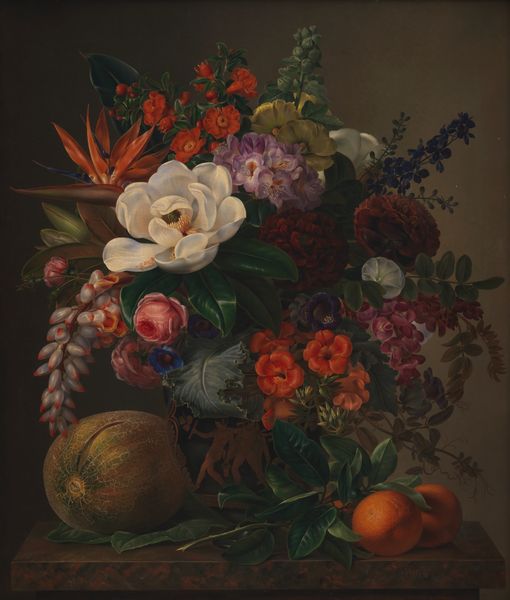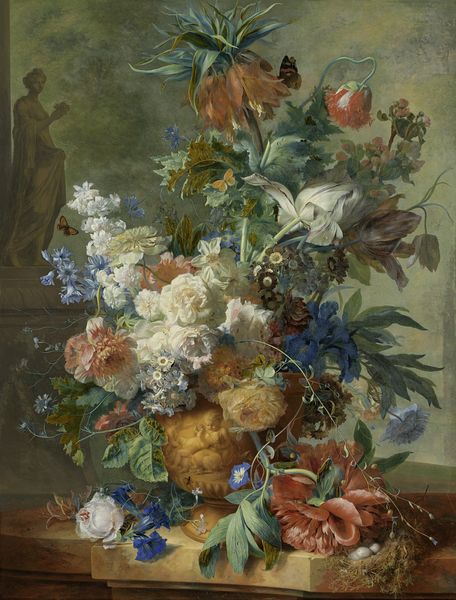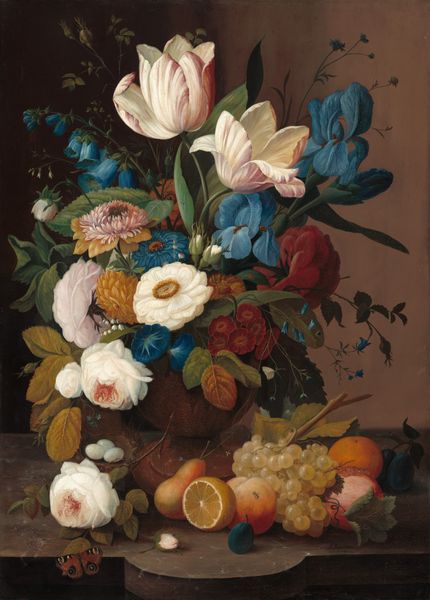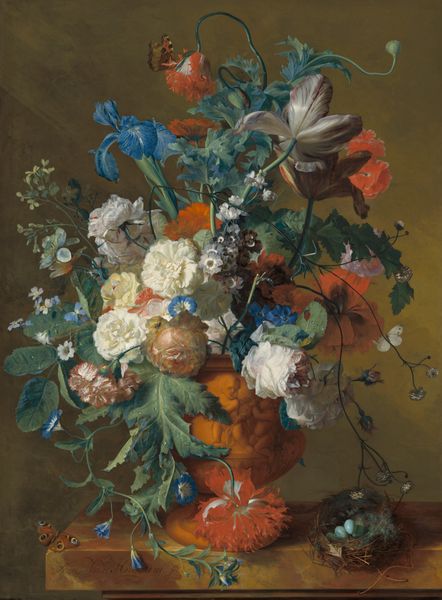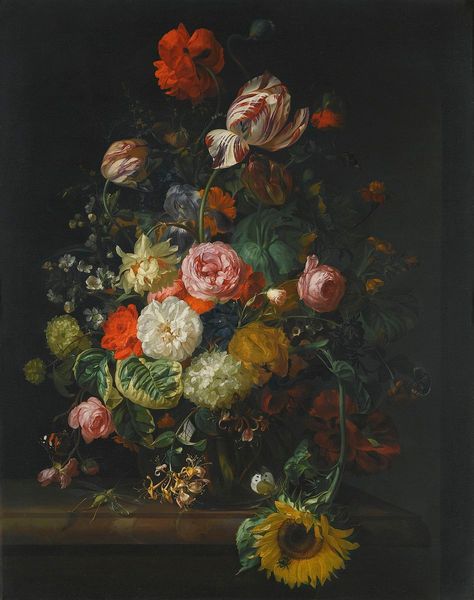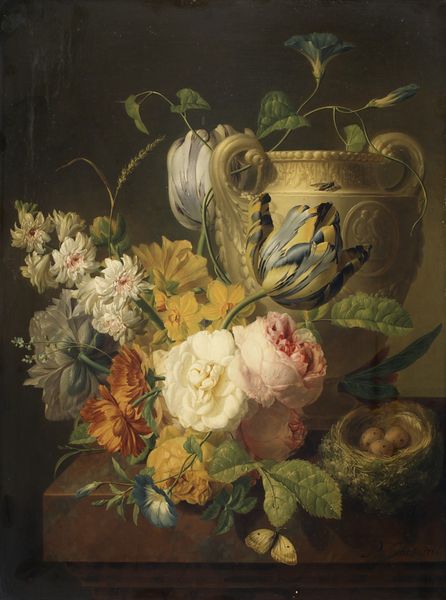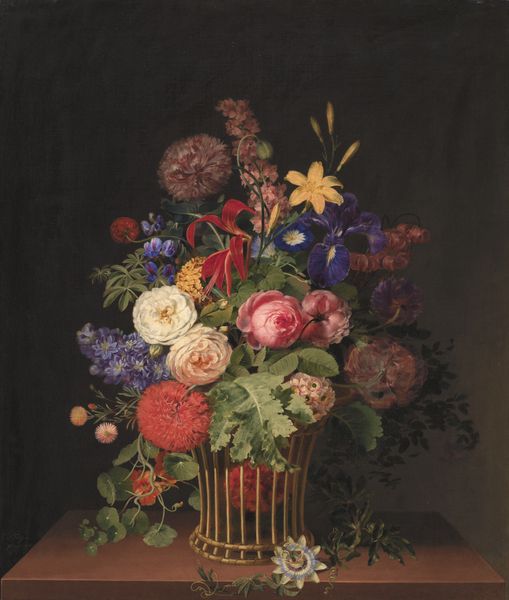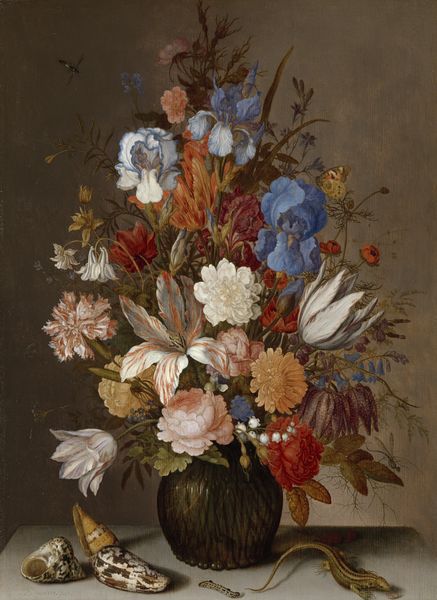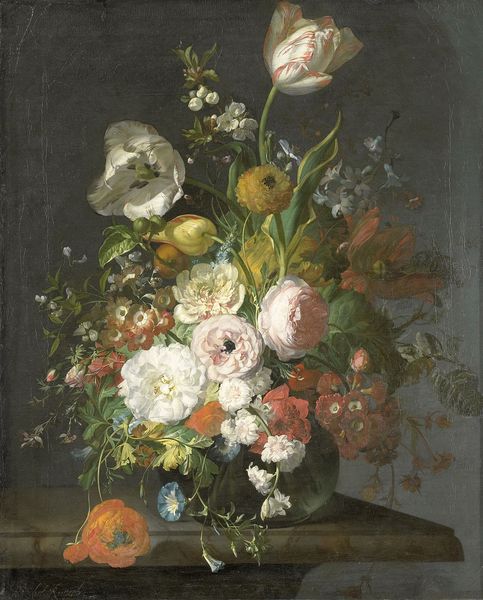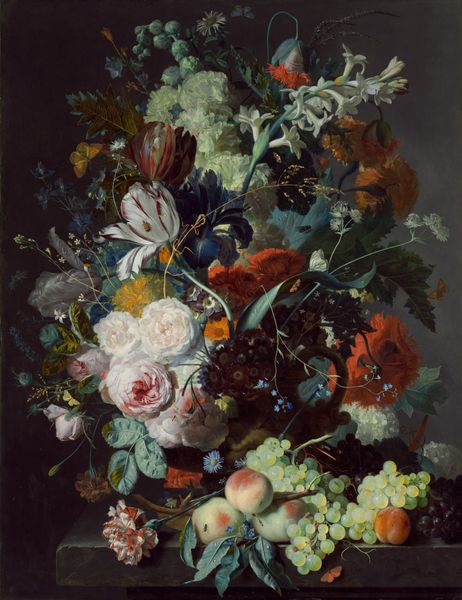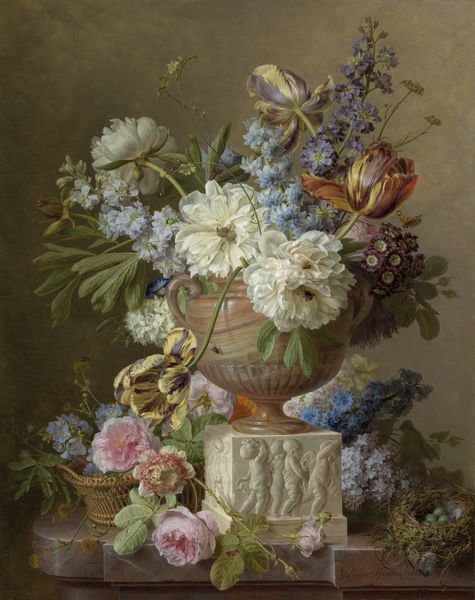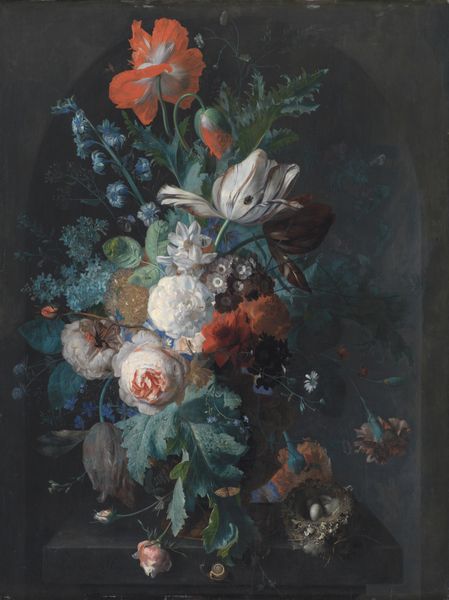
Dimensions: height 50 cm, width 44 cm, height 37.2 cm, width 31.5 cm
Copyright: Rijks Museum: Open Domain
Anthony Oberman created this oil on panel still life, featuring flowers and nuts, sometime in the first half of the 19th century. This work exemplifies the fashion for still life painting in the Netherlands during that period, particularly among the rising middle class who sought to decorate their homes with symbols of prosperity and refined taste. The arrangement of meticulously rendered flowers and nuts isn't accidental; rather, it reflects the Dutch interest in botany and naturalism. Consider, too, the institutional context of the art world at this time. Works such as this were often displayed in private collections or in the burgeoning public museums, shaping how the Dutch populace viewed art and its place in their lives. To understand this painting more fully, we might delve into horticultural records, collectors’ inventories, and exhibition catalogues of the period, each providing insight into the cultural values that informed its creation and reception.
Comments
rijksmuseum about 2 years ago
⋮
Floral still lifes of the Romantic period are characterised by their simple composition, light colour and the profusion of native species. So too in this still life: we see authentic Dutch plants such as primulas, geraniums, periwinkles, forget-me-nots and nasturtiums, as well as plants that were cultivated in glasshouses around 1830: daffodils, anemones, tulips and hyacinths. The blue tulip was originally purple: remains of the lost red pigment are still visible.
Join the conversation
Join millions of artists and users on Artera today and experience the ultimate creative platform.
